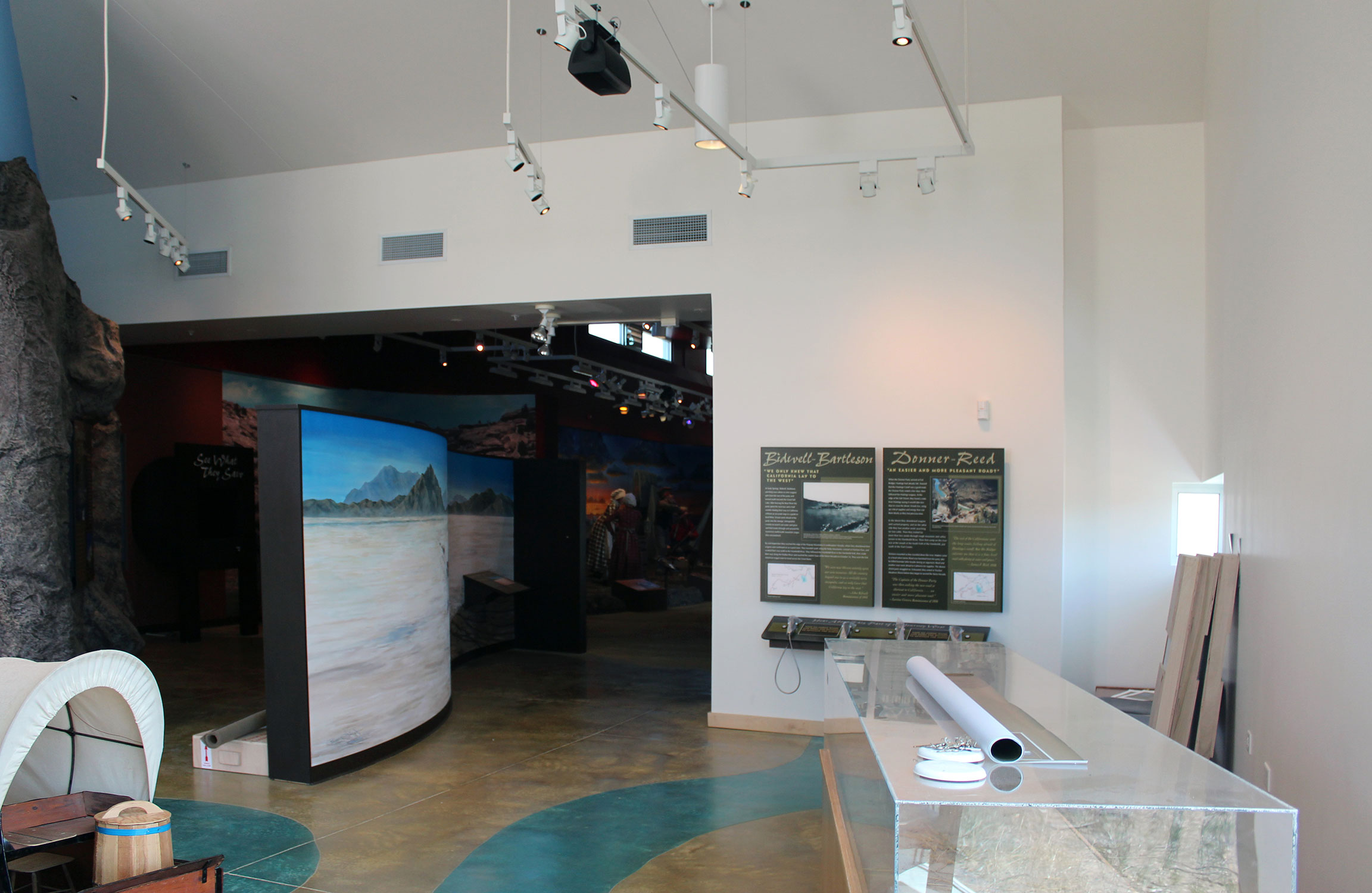California Trail Interpretive Center – “Great Basin Native Americans Exhibit"
If you were to take the same California Trail the pioneers followed in 1848, you’d find yourself on I-80 in Elko, NV. Just two miles from Hastings Cutoff, the California Trail Interpretive Center tells the story of the American’s expansion West. Amongst the trail blazers, conestoga wagons and panning for gold, is an entire wing dedicated to the Great Basin Native Americans who were greatly affected by the emigrants, wagons and livestock traveling through their land. I worked with the Center and members of the Paiute, Ute and Shoshone Tribes to ensure their stories were told accurately and powerfully. We used the five walls in the room to show five important moments in their history.
Mural 1: “Arrival of the Pioneers”
As you walk through the museum, you are experiencing a pioneer gathering their wares, loading their wagons, and heading West. The first mural shows the pioneers in their wagons about to enter Native American territory.
Mural 1: “Arrival of the Pioneers”
Mural 1: Before
Mural 1: Sketch
Mural 2: “Daily Life”
This piece is filled with vignettes describing how the tribe survived and thrived on the land, using its great bounty. Look closely to see the following: weaving baskets and cradleboards; harvesting and preparing pine nuts; scaling fish; cooking with baskets and hot rocks; making tools and weapons; carrying a baby in a cradleboard; spear fishing; and paddling a boat of cattail and tule; collecting tule; collecting water in jugs wrapped around girls’ heads; making a rabbit-skin blanket next to a woman wearing one; hunting buffalo, rabbits and antelope; and a grass hut. You’ll also find important animals to the Great Basin Native Americans, including an eagle, hawks, buffalo, rabbits, antelope, a mole, magpie birds, salmon and horses.
Mural 2: "Daily Life"
Mural 2: Before
Mural 2: Sketch
Wall 3: “Devastation and Relocation”
In sharp contrast to the previous wall, this mural demonstrates what happened to the Native American after the arrival of the pioneers. The sky is dark and gloomy. The land is barren and destroyed. Wagon trails have muddied the ground. Dead cattle infect the river. The plants and animals have perished. And the Native Americans have experienced sickness and death. At center, a Native American looks with disappointment at her lost home. Two grass huts burn in the background after disease struck both homes. And the Native Americans trail off to the right with their belongings to find a new home.
Wall 3: “Devastation and Relocation”
Mural 3: Before
Mural 3: Sketch
Wall 4: “Assimilation"
Between 1790 – 1920, The United States made efforts to assimilate the Native Americans to transform their culture to European-American culture. This mural depicts an actual school class of that time, with the Native Americans stiffly represented in their new forced culture.
Mural 4: "Assimilation"
Mural 4: Before
Mural 4: Sketch
Wall 5: “Modern-day Pow-wow”
This wall is dedicated to the Native Americans of Today who carry on the traditions of their ancestors. This scene represents a modern-day pow wow. Behind them are the American flag, and the flags of each Great Basin tribe.
Mural 5: "Modern-day Pow-wow"
Mural 5: Before
Mural 5: Sketch
This museum is open to the public at 1 Trail Center Way, Elko, Nevada 89801. See their website: http://www.californiatrailcenter.org
















